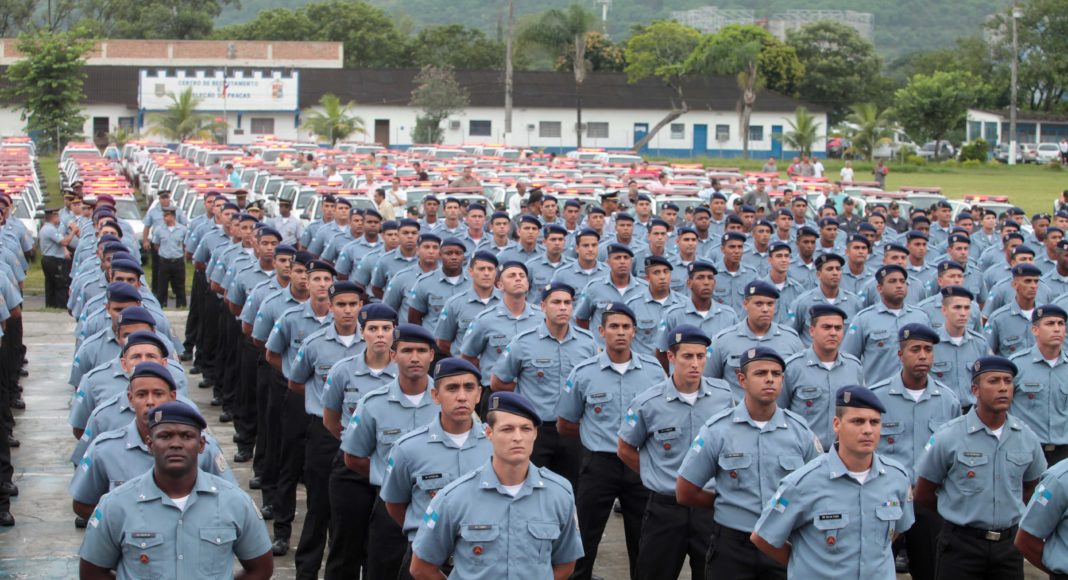Violence in Belém reopens debate about militarisation of miliary police
The specifics are still unclear, but one thing is certain: at least nine people were killed last night [4 November 2014] in the Brazilian city of Belém — and residents say the police are the ones responsible.
Around 7 p.m. on Tuesday evening, an officer in a military police tactical unit, Antônio Marco da Silva Figueiredo, was killed while returning to his home in Belém’s Guamá neighborhood. The 43-year-old Figueiredo, who was off-duty at the time, was shot at least three times and investigators suspect multiple people were involved in the crime, but have not yet announced any arrests in connection with Figueiredo’s murder.
A few hours later, rumors began to circulate on social media and through messaging services like WhatsApp about a “slaughter” taking place in the city’s poor neighborhoods, with the hashtag #ChacinaEmBelém (#SlaughterinBelém) trending on Brazilian Twitter. Users posted photos of bodies of alleged victims and a voice message made its way through social networks in which an unidentified person told residents of Guamá to stay in their houses to avoid being caught in a “cleansing” that would take place that night.
Initial reports spoke of dozens of victims, with some social media users joining in the hysteria and pushing the total up to near 100. As of this morning, nine people are officially confirmed dead, in addition to Figueiredo. Authorities are still working to identify those killed and inform their families, and the homicide division of the civil police has announced it will investigate the cases.
All of the victims are men, and at least six of them appear to have been killed execution-style.
Residents have blamed the military police, saying the killings were done in retaliation for the murder of Figueiredo. Officials say they are investigating the causes and those responsible for the wave of murders. The secretary of public security has told media that there was no confrontation between police and suspects, and has not commented on possible involvement of members of the military police in the subsequent executions.
Until this morning, few media outlets, even in Brazil, were reporting on the events, leaving documentation up to citizen journalists and regular civilians who circulated photos and videos recorded on their phones. Some suggested that the incident would have received much greater attention if it had taken place in another city.
Much of the “evidence” could not be independently confirmed, and government officials have attempted to discredit it, saying people are using photos from previous incidents and threatening legal repercussions for those found guilty of spreading false information.
The incident has reopened a nationwide debate about Brazil’s militarized police forces. Recent years have seen the deployment of “police pacification units” in urban sectors that are seen as especially violent or vulnerable to gang control, as part of a government initiative to establish order in these areas. However, many Brazilians and human rights groups allege that these units serve as little more than extra-judicial enforcement groups, often committing the same human rights violations as the groups they are allegedly fighting.
At the same time, residents lamented the fact that Belém, the capital of northern Pará state near the mouth of the Amazon, only appears in national news “when there is a tragedy.”
The banality of violence
The bloody night comes just days after a scathing op-ed in national newspaper O Globo took Brazil to task for its tolerance of mass-scale violence. Titled “The banality of extermination,” the piece references Hannah Arendt’s famous observation about the “banality of evil.”
 Co-written by the director of Amnesty International Brazil and the Latin America director of the Open Society Foundation, the opinion piece highlights Brazil’s brutal murder statistics: more than 56,000 homicides per year, accounting for more than 10 percent of the world’s total homicides and adding up to more than 1 million total people killed over the last two decades. In cities with a population of more than 100,000, homicide is the primary cause of death among adolescents between 12-18 years old.
Co-written by the director of Amnesty International Brazil and the Latin America director of the Open Society Foundation, the opinion piece highlights Brazil’s brutal murder statistics: more than 56,000 homicides per year, accounting for more than 10 percent of the world’s total homicides and adding up to more than 1 million total people killed over the last two decades. In cities with a population of more than 100,000, homicide is the primary cause of death among adolescents between 12-18 years old.
The writers suggest that Brazilians have normalized the nation’s sky-high levels of violence, and add that the fact that many victims are poor contributes to ongoing dismissal or ignorance of the alarming numbers.
Yet with growing ability to document incidents as they happen, as the country saw in Belém last night, there is an opportunity to shed light upon the darkest corners of institutional violence in Brazil. The question remains whether the government, security forces and other officials will actually take any action, or this incident will fade into just another statistic.
A graphic blog, in Portuguese, on the PM’s invasion of Belém’s Guamá neighborhood is available here.

